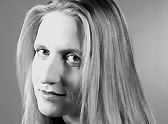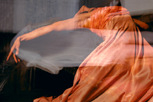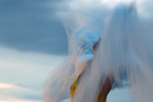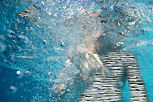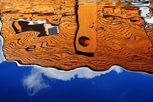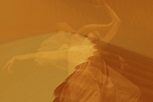Corinna Rosteck
photo- video- installation – Art in Architecture
Corinna Rosteck (born 1968 in Hameln and raised on Ibiza) is a freelance artist active in the spheres of photography, video art and installation. Following scholarships to London, Paris, New York and Japan, she now lives and works in Berlin. She is a member of the DGPh (German Society of Photography), Cologne and the German artist confederation.
Art in Architecture
She has executed well-received public art on site projects for renowned companies such as B. Braun AG, Airbus AG and Accenture GmbH. Her work is regularly featured in exhibitions in Germany and abroad as well as at art fairs in, for example, the Arabian region.
»Movement is the fundamental theme in the works of Corinna Rosteck. Thereby, a central focus of her creative output reflects a fascination with water. Her gaze concentrates upon the fluid, other states of aggregation, characteristic wave-like movements, and the multifarious refractions and reflections of light. Surfaces that undermine a perspectival vision are also found within the urban environment, the desert landscape and the undulations of humans in dance. The artistic intention of Corinna Rosteck engenders a unification of photography and painting, expanding both through spatial- and/or context-related installations. The artist has developed special printing techniques utilizing unique, photometric materials and surfaces. The reflective picture surfaces take up this thematic aspect and enable the viewers, through their own movement in face of the image, an experience of chatoyant sensation within both the internal and external sphere.
»The viewer experiences movement in the image and simultaneously, one's own movement within the environment. This arises due to the constantly changing in-sights. The body, picture surface and environment enter a dialog. The large-format photographs of light-saturated and reflective water oscillate between objective reproduction and abstract structure. The impression of the painterly dynamic surface areas is effectively enhanced by the metallic reverberation of the image surface, which changes depending on the natural fall of the light within the exhibition space and thus corresponds to the ever-modulating appearance of water. Of concern here is the expansion of the photographic eye.


